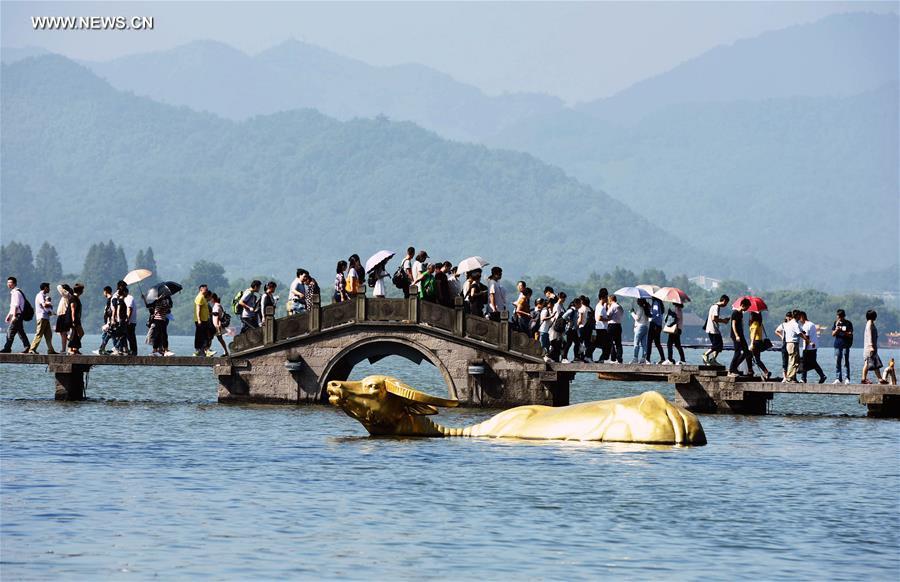Full coverage: 67th Chinese National Day
This year’s National Day holiday is drawing to a close, and many have spent this time traveling. This holiday, "G20" and "Red tourism" are the buzzwords.

Tourists visit the West Lake in Hangzhou, capital of east China's Zhejiang Province, Oct. 2, 2016. Altogether 593 million people visited tourist attractions around the country and spent 482.2 billion yuan (about 72.3 billion U.S. dollars) during this year's National Day holiday, up 12.8 percent and 14.4 percent respectively year on year, according to the China National Tourism Administration. (Xinhua/Long Wei)
Undoubtedly, Hangzhou is one of the most popular destinations this year. Playing host to the G20 Summit earlier in September, the city was thrust into the spotlight. Data from the National Tourism Administration shows nearly 2.7 million people traveled to Hangzhou on October 5 alone.
Anticipating a rush, the city’s management team specially installed more than 15,000 pieces of isolation fences for the safety of tourists.
This year marks the 80th anniversary of the victory of the Long March, and tourists are very much interested in the journey. Travel data show attractions in Guizhou Province’s Zunyi city received nearly 1 million tourists in the first five days, an increase of more than 35 percent from the year before.
Domestic travel was very trend-based this year. In terms of overseas travel, Chinese tourists were previously very much focused on shopping-oriented travel, racking up buys in luxury stores. But this year, many try to get a taste of local customs and cultures.
“With the improvement of living standards, we may have more pursuits than just material things. We want to get to know the country, the local culture. There is so much we can learn from them,” said a tourist.
The travel crunch during the National Day holiday is no joke. That is why tourist attractions seek to siginificantly improve management levels to deal with the surge of tourists. In Sichuan province, where the Leshan Giant Buddha is located, staff have taken effective measures to ensure safety and order.
But it is not all manual labour. Technology is applied to provide better service. Mount Tai in Shandong province makes use of a big data platform to monitor and control tourist flow. And through a free app, tourists can obtain voice guides, map navigation and even buy tickets. If there is one thing about the holidays that has not changed, it is how crowded these scenic spots can be.















